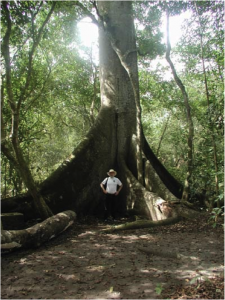By joining the Maya Global Tree of Life you will become a founding member of the Maya Global 2012 foundation and help us to rebuild the Mayan world economy. You will receive important news and informative updates on the Maya Global 2012 project. You will also be entered to win a $1,000 certificate towards the purchase of future products produced by Maya Global 2012 projects!
The information that you provide will be kept confidential
Yaxche, the Maya Tree of Life
The Tree of Life is a common symbol in many cultures. For the Maya, as for others, it represents the axis mundi, the stable world center. It constitutes a symbolic vertical line–like the line of balance on a spinning top–that unites the three realms of underworld, earth, and heavens.
 For the Maya, the Tree of Life, called Yaxche, is traditionally a Ceiba tree. This is a tall tree with large buttressed roots, a remarkably straight trunk, and a high horizontal crown. The roots are said to shelter bats, symbolic of the underworld. The trunk teems with insect life, and attracts the animals and birds that feed on them. The crown spreads wide over the jungle canopy, often with four branches that would suggest the four cardinal directions that are so significant to the Maya. The eagles that roost there represent the celestial realm.
For the Maya, the Tree of Life, called Yaxche, is traditionally a Ceiba tree. This is a tall tree with large buttressed roots, a remarkably straight trunk, and a high horizontal crown. The roots are said to shelter bats, symbolic of the underworld. The trunk teems with insect life, and attracts the animals and birds that feed on them. The crown spreads wide over the jungle canopy, often with four branches that would suggest the four cardinal directions that are so significant to the Maya. The eagles that roost there represent the celestial realm.
The axis mundi is the navel of the world. A Yaxche could be found at the center of most pre-Columbian Mesoamerican villages. The Tree of Life is a natural analog to the constructed Mayan temple, which was also a vertical structure representing the passage from subterranean to heavenly realms.
For the Maya, the cross was viewed as an iconic representation of the Yaxche, so that in the symbol of the cross Christian and traditional motifs are confounded. This may account in part for the power of the Talking Cross that summoned the Maya of the Yucatan to rebellion during the War of the Castes. Ceiba flowers served as the pattern for earflares worn by Classic Maya kings; in modern Mayan ceremonies, the same blossoms are used to decorate crosses. The Tree of Life motif is also commonly found as a design element in highland Maya textiles.